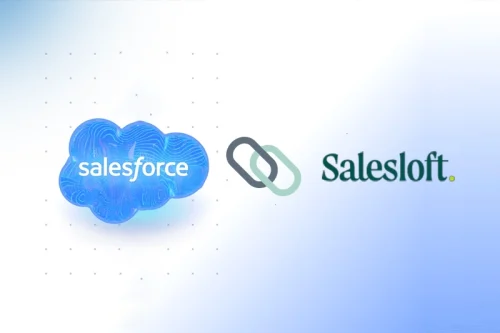How to Use Salesforce Data Management Services for Better Performance
18 Jun 2025
Table of Contents

Businesses use multiple tools that feed data directly from Salesforce. Often these tools operate independently and start to create data silos and fragmented views of the information. And when this data enters Salesforce’s database, it creates duplicate and inconsistent records. That’s where you need Salesforce data management services.
If you want to learn about why Salesforce file sync matters and how Salesforce data management services can help you optimize customer interaction, and supercharge business growth, keep on reading!
Table of Contents
5 Ways to Utilize Salesforce Data Management Services
Whether you are managing customer support files, sales records, or marketing assets, optimized data handling ensures faster performance and better compliance. Let’s take a look at the different ways you can use Salesforce data management services for optimized performance.
1. Use Data Import Wizards for Clean, consistent Onboarding
The first and crucial step to efficient data management is feeding the accurate data to the system consistently. For this, you can use Salesforce’s Data Import Wizard that enables you to map standard and custom fields and avoid duplicate records during import. To make this process seamless, you can combine Import Wizard with Duplicate Management Rules to prevent redundant contacts or leads from entering your system.
2. Sync and Access Files Easily with Salesforce File Sync
When your team collaborates on documents like service reports, proposals, and contracts, manual file uploads can slow things down. Salesforce File Sync allows you to keep local documents in sync with Salesforce records in real-time. This way, you don’t have to do manual uploading, files update automatically, and you always work with the updated version.
3. Extend Storage Smartly With Salesforce File Storage in SharePoint
As we all know, Salesforce has a native storage limit, and extending it can be heavy on your pockets if not done properly. However, you can do one smart move, and that is integrating Salesforce file storage in SharePoint. This connection will allow you to store large documents externally while still linking them contextually to Salesforce records.
4. Implement Structured File Management for Easy Accessibility
Salesforce file management is all about organizing files so that you can easily find, track, and share them. For this, you can use folders, naming conventions, color coding, and tagging to maintain the structure. In addition to that, you can assign the visibility based on user roles and record types. And to make your life easier, you can enable content delivery tracking to monitor when and how external stakeholders view shared files.
5. Protect Your Data With Salesforce Secure File Storage
Data security is not just an IT problem; it is a performance issue. Poor access controls or insecure file handling can create compliance risk, downtime, and loss of trust. However, Salesforce secure file storage can help you encrypt sensitive documents, restrict access based on roles or record ownership, and maintain audit logs for sensitive activity. This is crucial for regulated industries like healthcare or finance to meet compliance standards without compromising accessibility.
The Bottom Line
Salesforce success is all about how clean your data is and how securely it flows through the system. By actively using Salesforce data management services, you can easily transform data from a burden into a business advantage.
Need Expert Help Setting Up a Compliant Salesforce Data Strategy? Let’s Talk!
Our certified Salesforce consultants can help you audit, optimize, and future-proof your org. Just drop us a line at contact@360degreecloud.com, and we’ll take it from there!
Frequently Asked Questions
How do I sync data in Salesforce?
You can sync data in Salesforce using tools like Salesforce Files Sync, Data Loader, or third-party integrations. For files specifically, Files Sync keeps your desktop documents and Salesforce records updated in real-time, so teams always work on the latest version.
Is Salesforce Files Connect free?
Salesforce Files Connect is included in some Salesforce editions but may require additional licensing based on your use case (like external SharePoint or Google Drive integration). It’s best to check with your Salesforce admin or account manager to confirm based on your org’s setup.
Where are files and attachments stored in Salesforce?
Files and attachments are stored securely in Salesforce under Salesforce File Management. You can also extend storage by integrating with tools like SharePoint—a common setup for companies that need scalable Salesforce file storage in SharePoint.
How to get file link in Salesforce?
To get a file link in Salesforce, go to the file record, click the dropdown next to the file name, and select “Copy Link.” You can then share this link with users who have access to the file—perfect for collaborative work while keeping Salesforce secure file storage intact.
About the author
Editorial Team – 360 Degree CloudThe Editorial Team at 360 Degree Cloud brings together seasoned marketers, Salesforce specialists, and technology writers who are passionate about simplifying complex ideas into meaningful insights. With deep expertise in Salesforce solutions, B2B SaaS, and digital transformation, the team curates thought leadership content, industry trends, and practical guides that help businesses navigate growth with clarity and confidence. Every piece we publish reflects our commitment to delivering value, fostering innovation, and connecting readers with the evolving Salesforce ecosystem.
Recent Blogs
 Salesforce Clouds
Salesforce Clouds
Complete Guide to Salesloft Salesforce Integration for Sales Team
In the fast-paced world of modern sales, efficiency is driven by a powerful duo: Salesloft for high-velocity outreach and Salesforce as the ultimate system of record. While Salesloft serves as the “cockpit”…
Read More Salesforce Services
Salesforce Services
10 Best Salesforce Implementation Partners to Consider in 2026
In 2026, Salesforce is far more than a CRM; it is a complex, AI-driven engine powered by Agentforce and Data Cloud. While the platform’s potential to transform business is…
Read More Salesforce Clouds
Salesforce Clouds
How Salesforce Data 360 Fuels Context-Aware AI Agents
The core issue crippling most enterprise AI projects is fragmented, incomplete, and outdated data. Customer records are often scattered across the CRM, ERP systems, data…
Read MoreReady to Make the Most Out of Your Salesforce Instance?
Our Salesforce aces would be happy to help you. Just drop us a line at contact@360degreecloud.com, and we’ll take it from there!
Subscribe to our newsletter
Stay ahead with expert insights, industry trends, and exclusive resources—delivered straight to your inbox.



